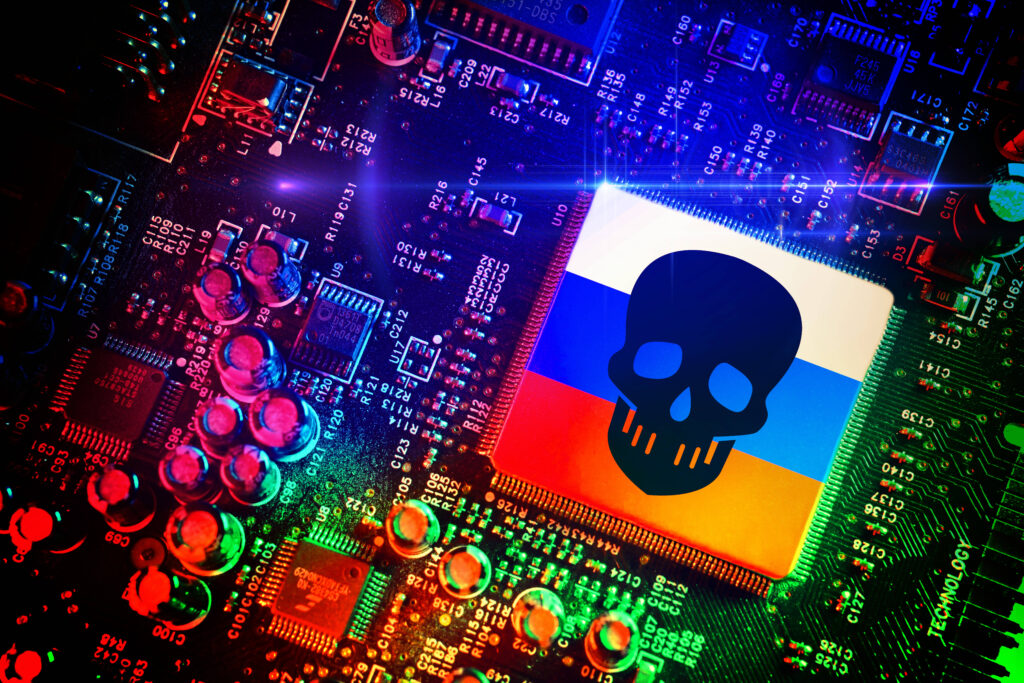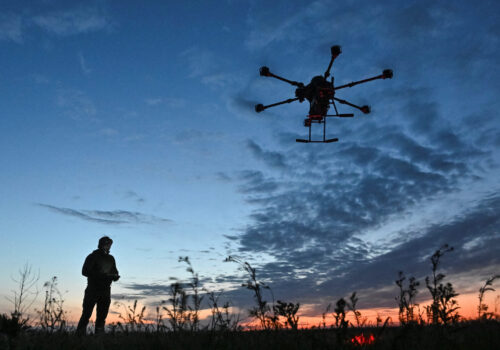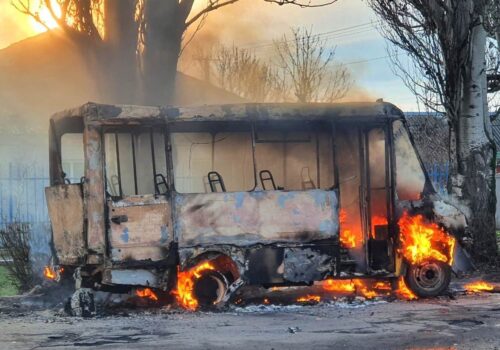As Russia’s full-scale invasion of Ukraine continues, the Kremlin is also rapidly escalating its hybrid war against Europe. Intelligence officials from a number of European countries are now raising the alarm and warning that Russian operations are growing in number and becoming bolder, with potential targets including transport hubs and critical infrastructure.
The Kremlin employs hybrid warfare tactics to remain below the threshold that would trigger a unified and potentially overwhelming European response. This has led to a surge in sabotage, cyberattacks, political interference, and disinformation campaigns across Europe, with a particular emphasis on countries closer to Russia.
Moscow’s hybrid war against Europe mirrors the tactics used by the Kremlin in Ukraine following the start of Russia’s invasion in 2014. Ukraine’s response to the often unprecedented challenges posed by Russian hybrid warfare offers important lessons for Kyiv’s European partners.
The Ukrainian experience highlights the gravity of the hybrid threat and the importance of an integrated response. The overall message to Western policymakers is clear: Moscow views hybrid warfare as an important Russian foreign policy tool and will continue expanding its campaign. Europe cannot afford to wait for Russian hybrid attacks to escalate further before building the advanced capabilities required to counter this threat.
Stay updated
As the world watches the Russian invasion of Ukraine unfold, UkraineAlert delivers the best Atlantic Council expert insight and analysis on Ukraine twice a week directly to your inbox.
There have been growing reports of Russian hybrid war-style attacks across the EU since the onset of Russian aggression against Ukraine eleven years ago. This trend gained significant additional momentum following the start of the full-scale invasion in February 2022.
Typical incidents include cyberattacks targeting infrastructure, sabotage including arson attacks, and attempts to disrupt military aid destined for Ukraine. Moscow is also accused of investing billions of dollars in sophisticated social media campaigns to influence the outcome of elections across Europe. The Kremlin’s hybrid operations are concentrated in central and eastern Europe, with Poland, Romania, and the Baltic states among the primary targets.
None of this is new to Ukraine. For more than a decade, Ukrainians have been learning to cope with the full range of Russia’s hybrid warfare toolbox. Russia’s attack on Ukraine began in February 2014 when Russian soldiers without insignias took control of Ukraine’s Crimean peninsula in a lightning operation that was accompanied by a massive wave of targeted disinformation.
Russia’s subsequent efforts to destabilize and subjugate the rest of Ukraine have involved a combination of conventional military aggression, sabotage, cyberattacks, disinformation campaigns, and support for pro-Russian actors in Ukraine. Thanks to this prolonged exposure to Russian hybrid warfare, Ukraine has been able to develop countermeasures that have helped build resilience and reduce the impact of Russia’s hybrid operations.
Ukraine’s response has been a collaborative effort involving the Ukrainian government, civil society, and the private sector. In the cyber sphere, efforts to improve Ukraine’s digital security have played a key role, with the launch of the country’s popular Diia platform and the establishment of the Ministry of Digital Transformation helping to drive important digital governance reforms.
This has enhanced Ukraine’s ability to maintain public services amid acts of cyber aggression and has improved engagement with the population. Ukraine’s progress in the digital sphere has been recognized internationally, with the country climbing from the 102 spot to fifth position in the UN’s annual Online Services Index in the seven years between 2018 and 2025.
Eurasia Center events

Ukraine’s coordination structures, such as the Center for Strategic Communications and the Ministry of Digital Transformation, enable swift and well-coordinated responses across government, media, and digital channels. This offers a number of advantages in a hybrid war setting. For example, it allows the Ukrainian government to synchronize positions with proactive narrative-setting when countering the Kremlin’s disinformation campaigns.
Ukraine has also benefited from a decentralized approach involving digital volunteers, civil society, and public-private partnerships. A wide range of civic tech groups and open-source investigators are active in Ukraine detecting and countering Russian disinformation. These measures have made it possible to expose Russian narratives efficiently, coordinate messaging across government and civil society, and maintain coherence during military operations.
Since 2014, Ukraine has been able to reduce Russia’s overwhelming initial advantages on the information front of the hybrid war. While Russian disinformation tactics continue to evolve and remain a major aspect of the ongoing invasion, Ukraine has managed to increasingly leverage information to shape international opinion and influence diplomatic outcomes.
At present, the European response to Russia’s hybrid war lacks the institutional agility and coordination between public sector and civil society that is evident in Ukraine. Instead, the EU and NATO have developed a number of parallel structures such as NATO’s Joint Intelligence and Security Division and the EU’s East StratCom Task Force. While these agencies continue to make meaningful contributions to the fight back against Russian hybrid warfare, they have yet to demonstrate the kind of real-time operational coordination that has served Ukraine so well.
Ukraine’s model for combating Russian hybrid warfare can’t be replicated in full, but it could serve as a practical reference point for building more adaptive and integrated responses across the West. Given Ukraine’s unique experience, it might make sense to establish a trilateral consultative framework together with the EU and NATO to enable rapid hybrid threat evaluations and coordinate responses.
Ukraine’s long record of countering Russian hybrid warfare has also highlighted the role of civil society. Kyiv’s European partners should consider increasing support for initiatives such as investigative journalism, fact-checking platforms, and technical watchdogs that can serve as support elements in a broader European defense ecosystem. In an environment where information is increasingly weaponized, Ukraine’s experience has also underlined the need to embed media literacy into the education system to ensure European citizens are able to consume information critically and are less vulnerable to Russian propaganda.
Maksym Beznosiuk is a strategic policy specialist and director of UAinFocus, an independent platform connecting Ukrainian and international experts around key Ukrainian issues.
Further reading
The views expressed in UkraineAlert are solely those of the authors and do not necessarily reflect the views of the Atlantic Council, its staff, or its supporters.

The Eurasia Center’s mission is to enhance transatlantic cooperation in promoting stability, democratic values, and prosperity in Eurasia, from Eastern Europe and Turkey in the West to the Caucasus, Russia, and Central Asia in the East.
Follow us on social media
and support our work
Image: IMAGO/Christian Ohde via Reuters Connect





